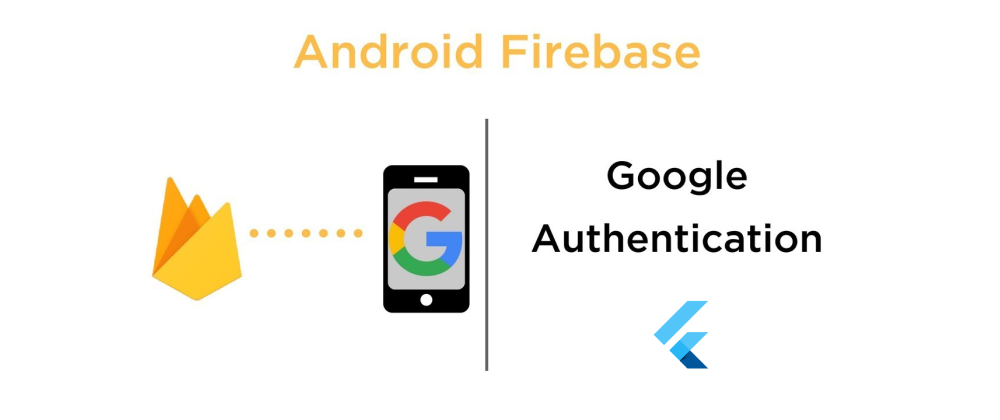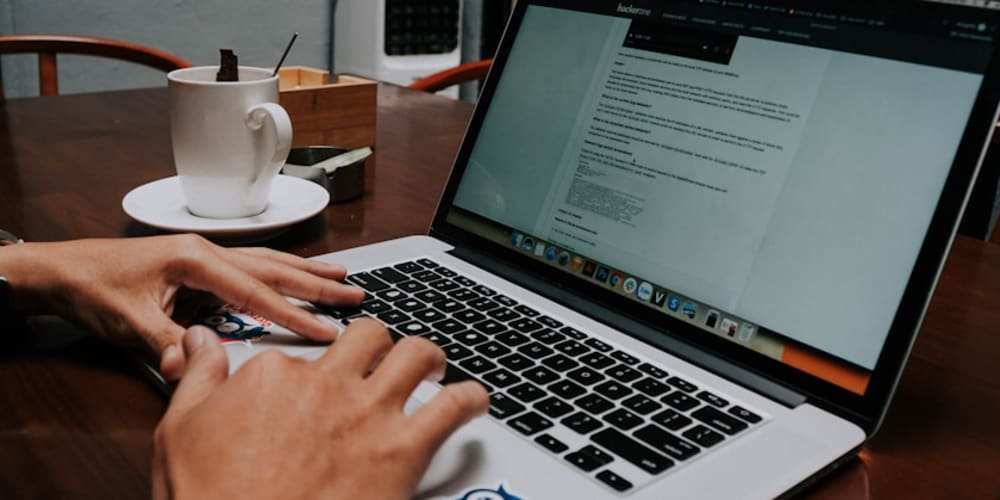0.Introduction
Have you ever wanted to implement user authentication in your flutter Application? Well, you've come to the right place..!
Let's see how to add GoogleSignIn() auth using Firebase Authenticationn.
What you'll learn
- Adding SplashScreen to your app
- Navigating user from the SplashScreen to AuthScreen or HomeScreen
- GoogleSignIn Authentication
Demo of the final implementation...

What is Firebase? (quick intro..)
Firebase is Google's mobile platform with a variety of services to build & ship our apps quickly. It is categorized as a NoSQL database and stores data in JSON like documents.
1.Setup Firebase Project
Head over to Firebase Console then add a new project.
To keep things simple and short I'm not explaining every step here. Trust me next steps are pretty clear to add your app to firebase.
- Make sure to set up a sign-in method in the Authentication section of firebase console. Otherwise, things are not gonna work as expected.
At a particular step, it asks you to enter SHA-1 Key to complete the process. Run this command in your cmd to get the SHA-1 key.
keytool -list -v -alias androiddebugkey -keystore C:\Users\YOUR_USER_NAME_HERE\.android\debug.keystore
2.Write some Code
Before writing code let's understand what we are going to build.
When the user opens app for the first time we should navigate user from SplashScreen to AuthScreen.
Next time when the user opens the app we should check if user is already logged in or not.
If user = loggedIn then navigate toHomeScreenby skippingAuthScreen.ELSE navigate user fromSplashScreentoAuthScreen.
Let's write some code🥳
Packages that we'll use:
- firebase_auth: ^0.18.3
- firebase_core: ^0.5.2
- google_sign_in: ^4.5.6
Add the above 3 packages to your pubspec.yaml file
And for every flutter app using Firebase, we must use the firebase_core package. And then you must initialize the app.
await Firebase.initializeApp();
If you don't initialize the app you may get the below error.
[core/no-app] No Firebase App '[DEFAULT]' has been created - call Firebase.initializeApp()
- Fire-up your preferred code editor and open your main.dart file. Remove all the boiler-plate code in main.dart file and add the below code.
import 'package:YOUR_PROJECT_NAME/screens/splashscreen.dart';
import 'package:YOUR_PROJECT_NAME/screens/authscreen.dart';
import 'package:flutter/material.dart';
import 'package:firebase_core/firebase_core.dart';
// Defining routes for navigation
var routes = <String, WidgetBuilder>{
"/auth": (BuildContext context) => AuthScreen(),
};
void main() async {
WidgetsFlutterBinding.ensureInitialized();
await Firebase.initializeApp();
runApp(MaterialApp(
debugShowCheckedModeBanner: false,
title: 'FaceBase',
routes: routes,
home: SplashScreen(),
));
}
2.Let's build UI for the remaining screens
- SplashScreen UI and Logic
Create a new dart file named splashscreen.dart inside the lib/screens folder.
Your splashscreen.dart should look like this..
import 'dart:async';
import 'package:firebase_auth/firebase_auth.dart';
import 'package:firebase_core/firebase_core.dart';
import 'package:firebase_gsignin/screens/homescreen.dart';
import 'package:flutter/material.dart';
class SplashScreen extends StatefulWidget {
_SplashScreenState createState() => _SplashScreenState();
}
class _SplashScreenState extends State<SplashScreen> {
final FirebaseAuth _auth = FirebaseAuth.instance;
User _user;
@override
void initState() {
super.initState();
initializeUser();
navigateUser();
}
Future initializeUser() async {
await Firebase.initializeApp();
final User firebaseUser = await FirebaseAuth.instance.currentUser;
await firebaseUser.reload();
_user = await _auth.currentUser;
// get User authentication status here
}
navigateUser() async {
// checking whether user already loggedIn or not
if (_auth.currentUser != null) {
// && FirebaseAuth.instance.currentUser.reload() != null
Timer(
Duration(seconds: 3),
() => Navigator.of(context).pushAndRemoveUntil(
MaterialPageRoute(
builder: (context) =>
HomeScreen(username: _auth.currentUser.displayName)),
(Route<dynamic> route) => false),
);
} else {
Timer(Duration(seconds: 4),
() => Navigator.pushReplacementNamed(context, "/auth"));
}
}
@override
Widget build(BuildContext context) {
return MaterialApp(
debugShowCheckedModeBanner: false,
home: Scaffold(
body: Center(
child: Text("Design Your splash screen"),
),
),
);
}
}
Create a another dart file named homescreen.dart inside the lib/screens folder.
And paste the below code into your homescreen
import 'package:firebase_gsignin/screens/authscreen.dart';
import 'package:flutter/material.dart';
import 'package:firebase_auth/firebase_auth.dart';
class HomeScreen extends StatefulWidget {
final String username;
HomeScreen({Key key, @required this.username}) : super(key: key);
@override
_HomeScreenState createState() => _HomeScreenState();
}
class _HomeScreenState extends State<HomeScreen> {
@override
Widget build(BuildContext context) {
return Scaffold(
appBar: AppBar(
title: Text("Hello "+ widget.username),
actions: <Widget>[
IconButton(
icon: Icon(Icons.exit_to_app),
onPressed: () async {
await FirebaseAuth.instance.signOut();
await googleSignIn.disconnect();
await googleSignIn.signOut();
Navigator.of(context).pushAndRemoveUntil(
MaterialPageRoute(builder: (context) => AuthScreen()),
(Route<dynamic> route) => false);
},
),
],
),
body: Center(
child: Column(
mainAxisAlignment: MainAxisAlignment.center,
children: <Widget>[
RaisedButton(
onPressed: () async {
await FirebaseAuth.instance.signOut();
await googleSignIn.disconnect();
await googleSignIn.signOut();
Navigator.of(context).pushAndRemoveUntil(
MaterialPageRoute(builder: (context) => AuthScreen()),
(Route<dynamic> route) => false);
},
child: Text("Log Out"),
color: Colors.redAccent,
),
SizedBox(
height: 10.0,
),
],
),
),
);
}
}
Let's implement Firebase Authentication
Create a new file named authscreen.dart inside lib/screens folder in which we'll set up google sign in and AuthScreen UI.
- Code for the
authscreen.dartUI and logic:
import 'package:firebase_auth/firebase_auth.dart';
import 'package:firebase_core/firebase_core.dart';
import 'package:firebase_gsignin/screens/homescreen.dart';
import 'package:flutter/material.dart';
import 'package:google_sign_in/google_sign_in.dart';
String name;
String email;
String imageUrl;
final FirebaseAuth auth = FirebaseAuth.instance;
final GoogleSignIn googleSignIn = GoogleSignIn();
class AuthScreen extends StatefulWidget {
@override
_AuthScreenState createState() => _AuthScreenState();
}
class _AuthScreenState extends State<AuthScreen> {
bool isVisible = false;
Future<User> _signIn() async {
await Firebase.initializeApp();
final GoogleSignInAccount googleSignInAccount = await googleSignIn.signIn();
final GoogleSignInAuthentication googleSignInAuthentication =
await googleSignInAccount.authentication;
final AuthCredential credential = GoogleAuthProvider.credential(
idToken: googleSignInAuthentication.idToken,
accessToken: googleSignInAuthentication.accessToken,
);
// final AuthResult authResult = await auth.signInWithCredential(credential);
// final User user = authResult.user;
User user = (await auth.signInWithCredential(credential)).user;
if (user != null) {
name = user.displayName;
email = user.email;
imageUrl = user.photoURL;
}
return user;
}
@override
Widget build(BuildContext context) {
var swidth = MediaQuery.of(context).size.width;
return Scaffold(
body: Stack(
children: <Widget>[
Container(
decoration: BoxDecoration(
image: DecorationImage(
image: AssetImage("assets/images/bg.png"),
fit: BoxFit.cover)),
),
Column(
mainAxisAlignment: MainAxisAlignment.center,
crossAxisAlignment: CrossAxisAlignment.center,
children: <Widget>[
Visibility(
child: CircularProgressIndicator(
valueColor: AlwaysStoppedAnimation<Color>(Color(0xFFB2F2D52)),
),
visible: isVisible,
)
],
),
Container(
margin: const EdgeInsets.only(
bottom: 60.0,
),
child: Align(
alignment: Alignment.bottomCenter,
child: SizedBox(
height: 54.0,
width: swidth / 1.45,
child: RaisedButton(
onPressed: () {
setState(() {
this.isVisible = true;
});
_signIn().whenComplete(() {
Navigator.of(context).pushAndRemoveUntil(
MaterialPageRoute(
builder: (context) => HomeScreen(username: name)),
(Route<dynamic> route) => false);
}).catchError((onError) {
Navigator.pushReplacementNamed(context, "/auth");
});
},
child: Text(
' Continue With Google',
style: TextStyle(fontSize: 16),
),
shape: RoundedRectangleBorder(
borderRadius: new BorderRadius.circular(30.0),
),
elevation: 5,
color: Color(0XFFF7C88C),
),
),
),
),
],
),
);
}
}
3.Conclusion
Well, we've successfully implemented authentication in our flutter app.

If you've any doubts, you can find the GitHub repo of this super simple project in the following link:
 Sai7xp
/
DEV.to-FirebaseAuth-Flutter
Sai7xp
/
DEV.to-FirebaseAuth-Flutter
Flutter + Firebase Google SignIn Demo
App ScreenShots
keep Fluttering!
Thank you for reading, if you found the article useful make sure to show some love.
-Moving Melody
Let's catch up on Twitter!























